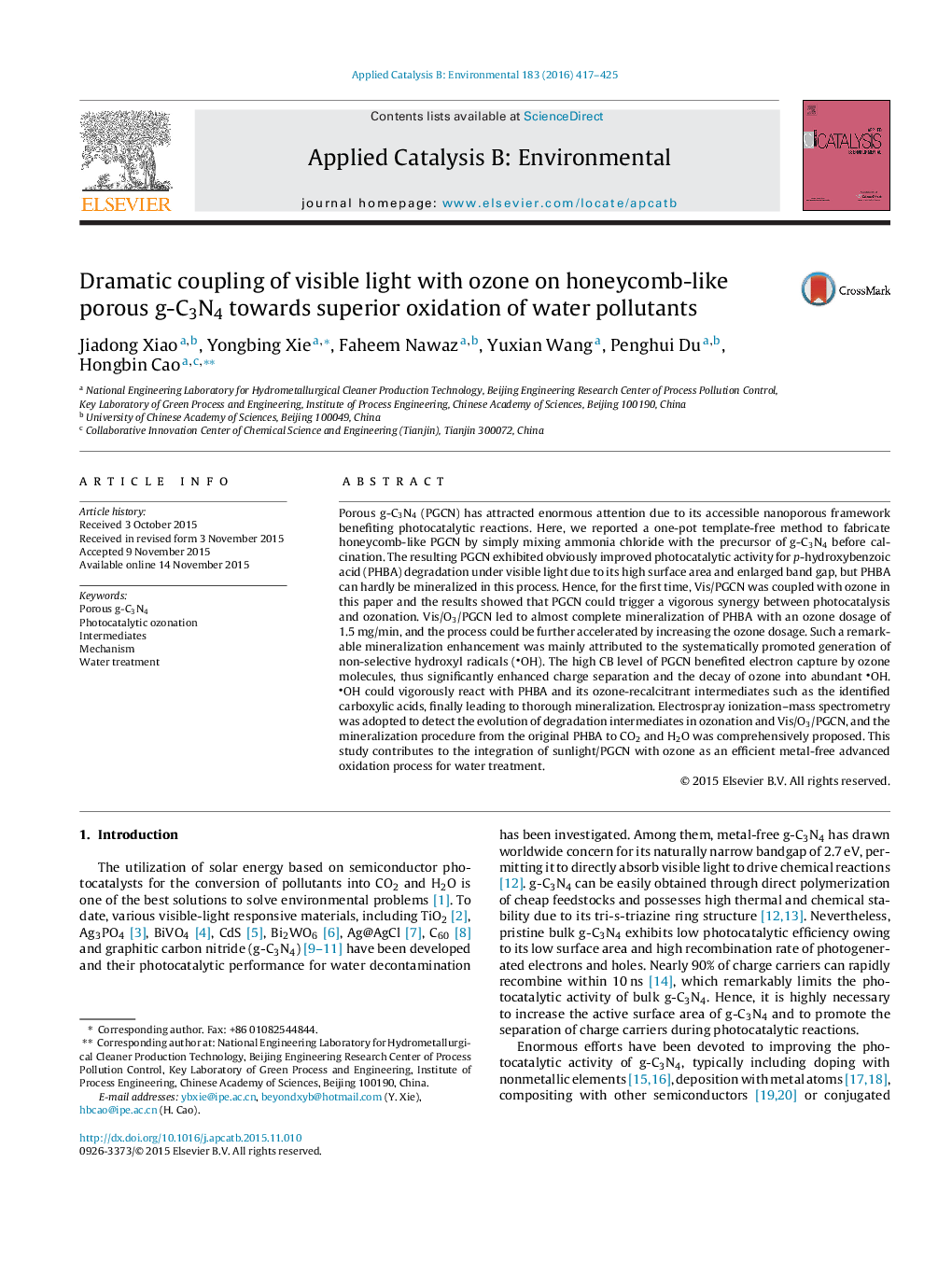| کد مقاله | کد نشریه | سال انتشار | مقاله انگلیسی | نسخه تمام متن |
|---|---|---|---|---|
| 45171 | 46401 | 2016 | 9 صفحه PDF | دانلود رایگان |

• Honeycomb-like porous g-C3N4 was fabricated via a one-pot template-free method.
• PGCN triggered a vigorous synergy between photocatalysis and ozonation.
• Vis/O3/PGCN led to almost complete mineralization of PHBA.
• The enhanced mineralization was due to systematically promoted generation of OH.
• The mineralization procedure of PHBA in Vis/O3/PGCN was proposed.
Porous g-C3N4 (PGCN) has attracted enormous attention due to its accessible nanoporous framework benefiting photocatalytic reactions. Here, we reported a one-pot template-free method to fabricate honeycomb-like PGCN by simply mixing ammonia chloride with the precursor of g-C3N4 before calcination. The resulting PGCN exhibited obviously improved photocatalytic activity for p-hydroxybenzoic acid (PHBA) degradation under visible light due to its high surface area and enlarged band gap, but PHBA can hardly be mineralized in this process. Hence, for the first time, Vis/PGCN was coupled with ozone in this paper and the results showed that PGCN could trigger a vigorous synergy between photocatalysis and ozonation. Vis/O3/PGCN led to almost complete mineralization of PHBA with an ozone dosage of 1.5 mg/min, and the process could be further accelerated by increasing the ozone dosage. Such a remarkable mineralization enhancement was mainly attributed to the systematically promoted generation of non-selective hydroxyl radicals (OH). The high CB level of PGCN benefited electron capture by ozone molecules, thus significantly enhanced charge separation and the decay of ozone into abundant OH. OH could vigorously react with PHBA and its ozone-recalcitrant intermediates such as the identified carboxylic acids, finally leading to thorough mineralization. Electrospray ionization–mass spectrometry was adopted to detect the evolution of degradation intermediates in ozonation and Vis/O3/PGCN, and the mineralization procedure from the original PHBA to CO2 and H2O was comprehensively proposed. This study contributes to the integration of sunlight/PGCN with ozone as an efficient metal-free advanced oxidation process for water treatment.
Figure optionsDownload as PowerPoint slide
Journal: Applied Catalysis B: Environmental - Volume 183, April 2016, Pages 417–425